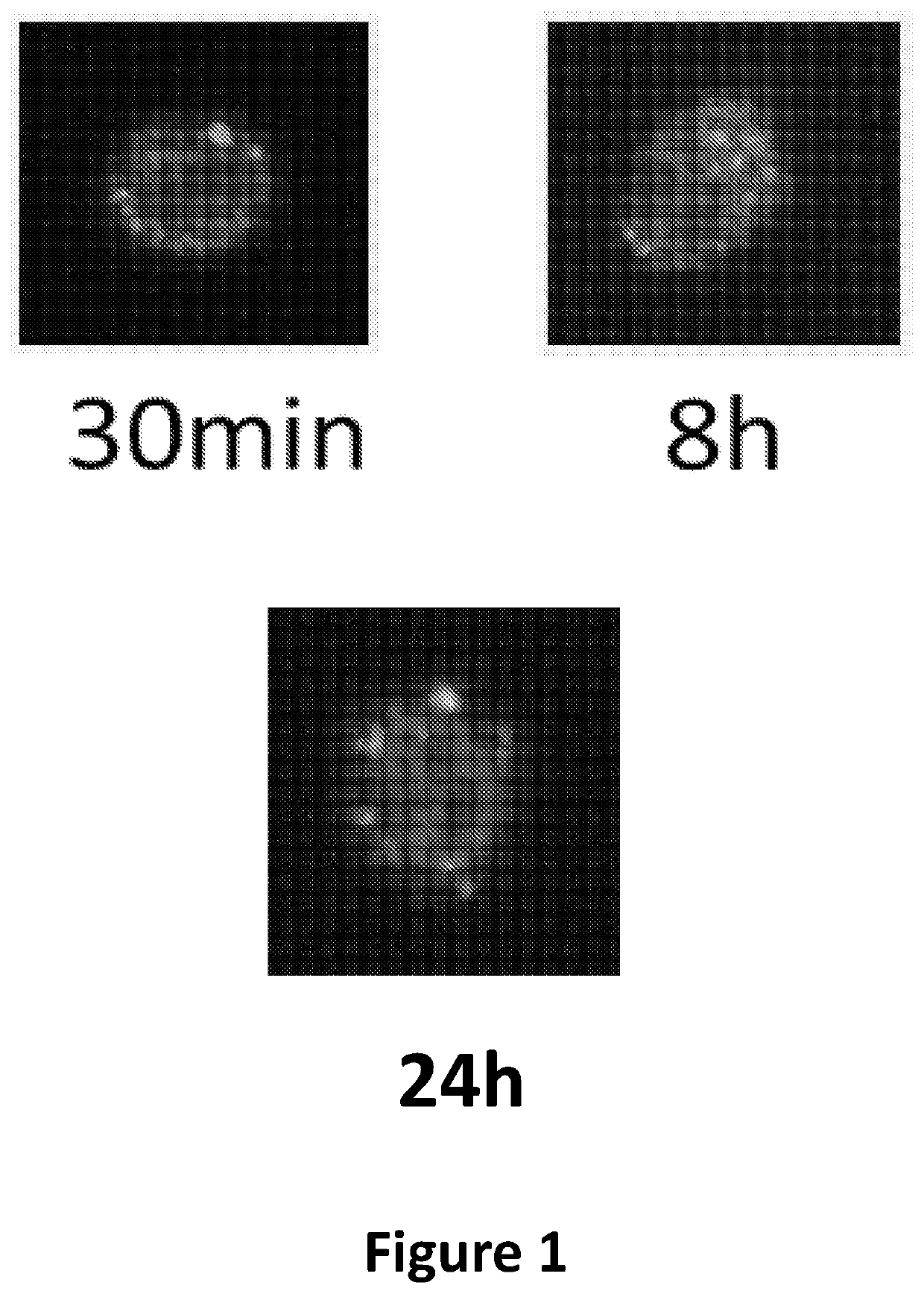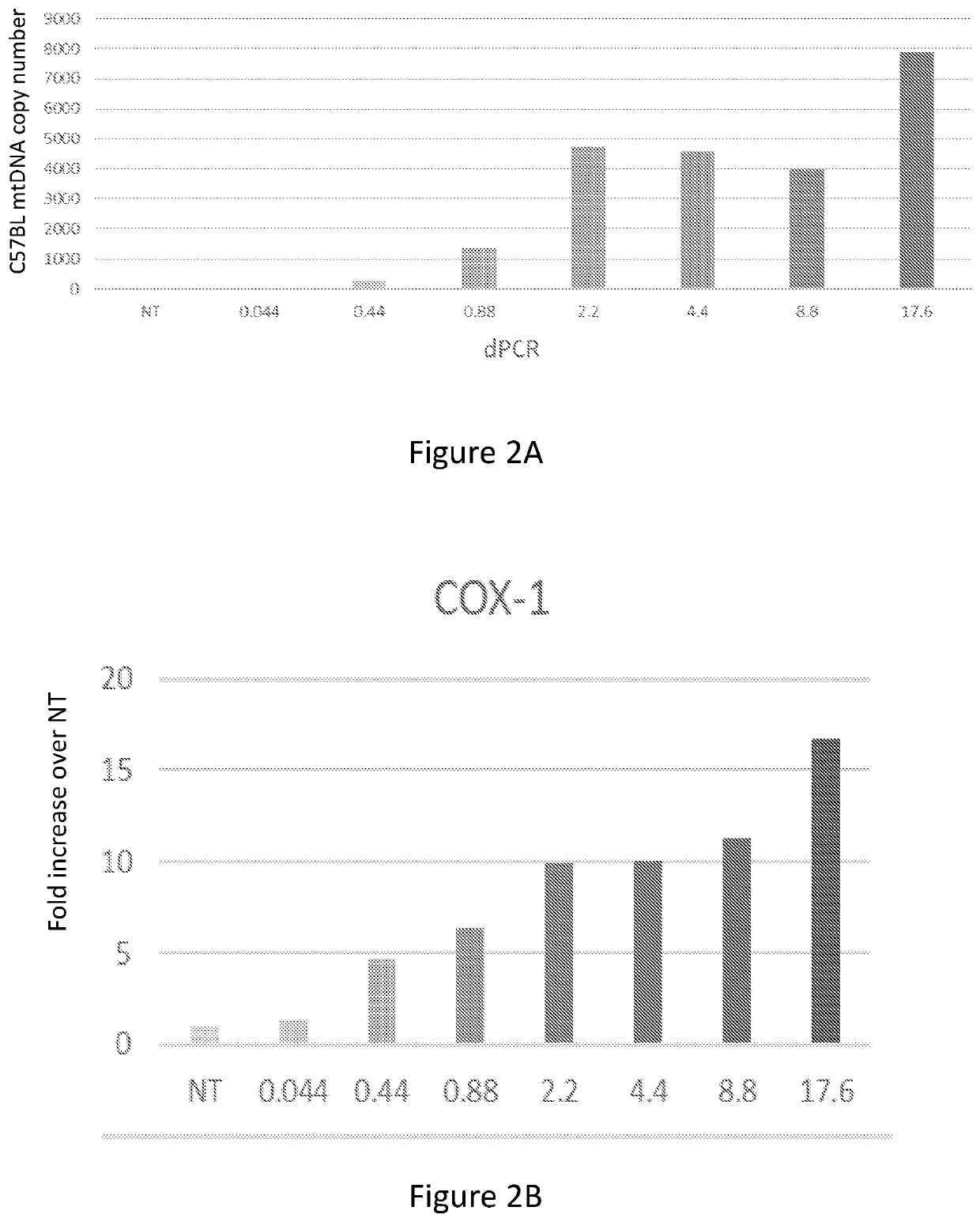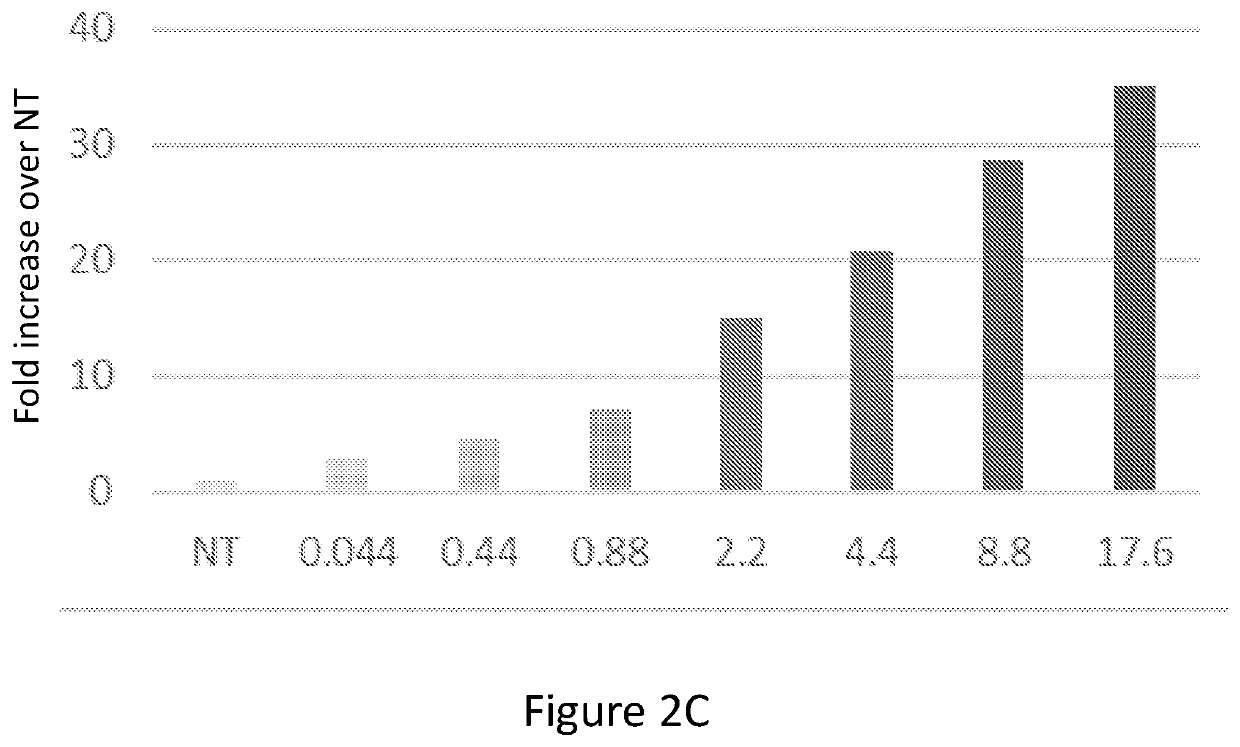Mitochondrial augmentation therapy for primary mitochondrial diseases
a technology of mitochondrial disease and augmentation therapy, which is applied in the field of primary mitochondrial disease mitochondrial augmentation therapy, can solve the problems of inability to achieve the effect of successfully implementing human juvenile patients, long and costly process, and inability to achieve the effect of restoring the function of defective mitochondria, improving the deficits in various physiological parameters, and achieving long-lasting and highly beneficial improvement of patients' health
- Summary
- Abstract
- Description
- Claims
- Application Information
AI Technical Summary
Benefits of technology
Problems solved by technology
Method used
Image
Examples
example 2
rial Augmentation Therapy in Mice
[0244]Different mouse cells were incubated in DMEM containing 10% FCS for 24 hours at 37° C. and 5% CO2 atmosphere with isolated mitochondria in order to increase their mitochondrial content and activity. Table 1 describes representative results of the mitochondrial augmentation process, determined by the relative increase in CS activity of the cells after the process compared to the CS activity of the cells before the process.
TABLE 1RelativeCS activity ofincrease inOrigin ofmitochondria / CS activityOrigin of cellsmitochondrianumber of cellsof cellsICR Mouse -Human4.4 U CS / +41%Isolated from wholemitochondria1 × 10{circumflex over ( )}6bone marrowCellsFVB / N Mouse -C57 / BL placental4.4 U CS / +70%Isolated from wholemitochondria1 × 10{circumflex over ( )}6bone marrowCellsFVB / N Mouse -C57 / BL liver4.4 U CS / +25%Isolated from wholemitochondria1 × 10{circumflex over ( )}6bone marrowCells
[0245]FVB / N bone marrow cells (carrying a mutation in mtDNA ATP8) were incub...
example 3
ts in Co-Existence of Exogenous and Endogenous mtDNA Within Cells
[0249]Mitochondrial augmentation of healthy donor CD34+ cells was performed with two different placenta-derived mitochondria batches, and cells were washed extensively after 24 h incubation. Illumina-based sequencing of the mtDNA show the presence of both transferred and endogenous mitochondria within the same cell.
[0250]As can be seen in FIG. 5 both MAT experiments from different placenta resulted in a similar augmentation percentage.
example 4
ria Can Enter Human Bone Marrow Cells
[0251]Human CD34+ cells (1.4*105, ATCC PCS-800-012) were untreated or incubated for 20 hours with GFP-labeled mitochondria isolated from human placental cells. Before plating the cells, mitochondria were mixed with the cells, centrifuged at 8000 g and re-suspended. After incubation, the cells were washed twice with PBS and CS activity was measured using the CS0720 Sigma kit (FIG. 6A). ATP content was measured using ATPlite (Perkin Elmer) (FIG. 6B), as previously described in WO 2016 / 135723.
[0252]The results demonstrated in FIG. 6 clearly indicate that the mitochondrial content of human bone-marrow cells may be increased many fold by interaction and co-incubation with isolated human mitochondria, to an extent beyond the capabilities of either human or murine fibroblasts or murine bone-marrow cells.
PUM
 Login to View More
Login to View More Abstract
Description
Claims
Application Information
 Login to View More
Login to View More - R&D
- Intellectual Property
- Life Sciences
- Materials
- Tech Scout
- Unparalleled Data Quality
- Higher Quality Content
- 60% Fewer Hallucinations
Browse by: Latest US Patents, China's latest patents, Technical Efficacy Thesaurus, Application Domain, Technology Topic, Popular Technical Reports.
© 2025 PatSnap. All rights reserved.Legal|Privacy policy|Modern Slavery Act Transparency Statement|Sitemap|About US| Contact US: help@patsnap.com



